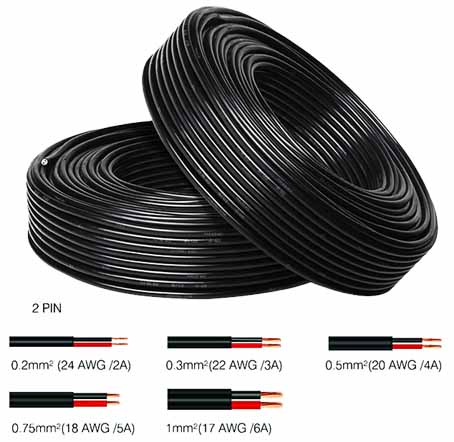Parameters and selection of PVC wires and cables

PVC insulated cables and wire products are divided into non-sheathed cables for fixed wiring, Sheathed cables for fixed wiring, Lightweight non-sheathed flexible cable, General purpose sheathed flexible cables, Installation wires and shielded wires, Special purpose sheathed flexible cable, PVC insulated flame-retardant/fire-resistant cables and other products.
The wire and cable industry is an important supporting industry for economic construction. It is widely used in various fields of the national economy and occupies a quarter of the electrical industry. It is the second largest industry in the machinery industry after the automobile industry. Among them, the wires used in interior decoration are mainly PVC insulated cables with rated voltages of 450/750V and below, also known as cloth wires.
The assessment of wire quality is mainly carried out by professional inspection agencies. The main technical indicators in the report are as follows:
1. Conductor DC resistance. It directly reflects the current-carrying capacity of the wire, that is, how much load it can carry. This index is related to the conductor material, the conductor cross-sectional area (wire specification), that is, the wire diameter.
2. Finished product withstand voltage test. Mainly check whether the external insulation of the wire has leakage. This index is related to the insulating material and manufacturing process.
3. Insulation (sheath) thickness and mechanical properties, etc. Mainly assess the service life of the wire and the use environment. If the insulation thickness is too thin or the core is eccentric, it is easy to be damaged in the thin position during installation or use, resulting in leakage. Wires with inferior insulation materials have a short service life.
The purchase of PVC cables
1. Products from regular manufacturers and merchants are preferred. Wires packed in reels should have a certificate of conformity, and the body of the wire should be printed with the name of the manufacturer or trademark, voltage, 3C, UL, VDE marks, etc. Manufacturers of fake and inferior wires are often "three-no" products, but they also have ambiguous signs of origin and other signs. For example, made in China, made in a certain province or city in China, etc., this is actually equivalent to not marking the place of production.
2. The conductor materials used in PVC wires are mainly copper and aluminum. When purchasing, first select the corresponding specifications according to the load used. For example, the lighting circuit uses 1.5 square millimeter copper wire or 2.5 square millimeter aluminum wire. Air conditioners, microwave ovens, ovens, etc. use 2.5 square millimeters of copper wire or 4 square millimeters of aluminum wire. Choosing appropriate specifications of wires can avoid short-circuits and fires due to insufficient current carrying capacity of small-size wires; Secondly, pay attention to the quality of the conductor when purchasing, and the qualified copper core wire should use purple-red, shiny, soft-feel copper. The fake and inferior copper core wire is purple-black, yellowish or white, with many impurities, poor mechanical strength, and poor toughness, and it will break with a little force. Moreover, if it is a multi-strand copper wire, it often breaks and the service life is short.
3. The sheath used for PVC wire is polyvinyl chloride insulation material. Qualified wire insulation should have a smooth appearance and clear printing on the surface. Observed from the wire end, the insulation should be uniform and not eccentric. Some shoddy wires seem to have thick insulation, but in fact most of them are made of recycled plastic. Over time, the insulating layer will age and cause leakage.
4. Good quality PVC wires are generally within the specified weight range. In terms of price, due to the low production cost of counterfeit and shoddy wires, vendors often sell them at low prices under the guise of low prices and good quality when selling.





